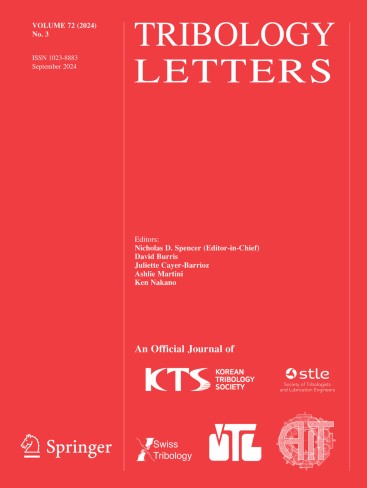Effect of Surface Oxidation on Adsorption and Frictional Properties of Oiliness Additives Evaluated by Atomic Force Microscopy
Abstract
A novel methodology using atomic force microscopy (AFM) has been developed for assessing the effect of surface oxidation on the adsorption and frictional properties of oiliness additives. This study focused on comparing the tribological behaviors of ester-based oiliness additives on oxidized versus pure Ti surfaces. The substrates were patterned to facilitate precise AFM-based friction testing. The oxide layer thickness was characterized by X-ray photoelectron spectroscopy and subsequently abraded using a diamond-coated AFM probe to expose the pure Ti surface. Tribological performance under atmospheric conditions was evaluated by comparing frictional properties using ester-based additives of varying ester functionalities, ranging from monoester to tetraester. Adsorption properties were characterized through neutron reflectometry and contact angle measurements. The results demonstrated a clear correlation between adsorption density and friction reduction, with tetraester showing superior performance, especially on pure Ti surfaces. These findings highlight the critical effect of oxidation states and additive molecular structures on frictional properties and adsorption behaviors at nanoscale resolution, providing valuable insights into boundary lubrication mechanisms and lubricant optimization.


 求助内容:
求助内容: 应助结果提醒方式:
应助结果提醒方式:


